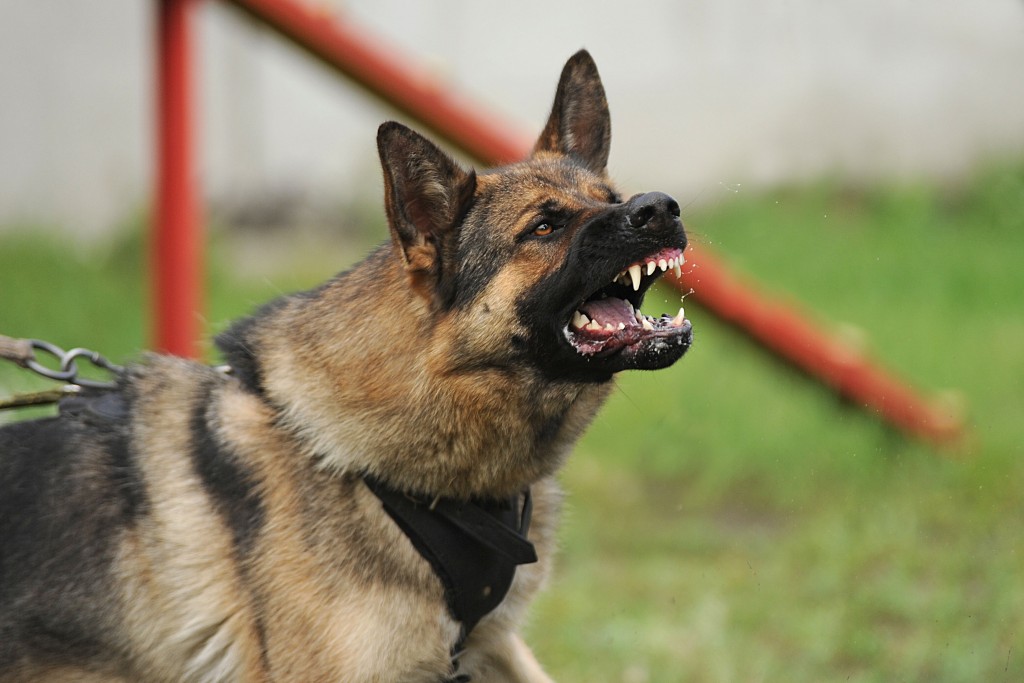If you find your pup suddenly lunging at your neighbor who just came by to say hi or snarling at you when you put on his leash, then you might have a problem.
Canine aggression is the violent behavior exhibited by dogs through baring their teeth, growling, barking, lunging, and biting. Often, the hostility shown by your pets is just an offshoot of their predatory instinct.
While it’s normal for canines to show signs of aggression, the frequent and excessive display of violence can be extremely alarming to dog owners. Luckily, there are effective strategies to pacify your pup when it begins to lash out.
Pinpoint the Triggers
First things first, it’s important that you understand the root cause of your dog’s aggression.
There are various reasons your pet erupts in a state of rage. Different external and internal motivations provoke a dog to bare its fangs and pounce on you.
Though there are numerous types, canine aggression is mainly triggered by three stimuli.
One of the primary motivations of canine violence is pure instinct. When a dog feels some kind of threat in its immediate surroundings, its natural reaction is to defend itself. Maybe the reason your pup is acting peculiarly feisty is that you might be unconsciously putting your furry friend in a situation with perceived danger.
Another reason why your dog is having anger issues is because of suppressed aggression. Restraining your pet’s freedom, such as locking it up in a cage or strapping it to a fence, only increases the likelihood of your dog to act up. If they can’t fully express themselves, dogs redirect their stifled fury to something else like innocent passers-by or your overenthusiastic cousin. When there’s a window of opportunity to attack, they will definitely take it.
Aside from that, hostility in canines can also be attributed to their territorial nature. Whatever they deem is theirs, they will protect by hook or by crook. If you show even the slightest ownership over what they eat, what they play with, or where they live in, chances are you would get them all riled up. So, if you want to avoid enraging your dog, respect their perceived boundaries.
Meanwhile, physical discomfort can also put a dog in aggressive behavior. With an inability to express their pain, they take it out on people. So, make it a habit to take them to the vet to monitor their physical health and ensure they’re not suffering from any sickness or injury. And before you say your pet is a bad dog, assess where their bouts of rage are really coming from.

Avoid Getting Physical
Spanking your aggressive dog will only make matters worse. Physical punishment will only cause your dog to go ballistic, as this only creates fear, distress, and internal confusion. Out of the need to protect itself, your pet might end up attacking you.
Understand that hitting and even hurling objects at your dogs will not improve their behavior or keep them from acting up again. Instead, you should correct their misconduct by mildly reprimanding them. You can talk to them, resist eye contact, or distance yourself from your dogs. But make sure you do this with proper timing and intensity to avoid triggering more undesirable behavior from your dogs.
However, some contest that any form of punishment administered on canines is counterproductive. The most effective way to improve a dog’s demeanor is through positive reinforcement.
This method puts more effort into owners to encourage their dogs’ pleasant behavior instead of zeroing in on their undesirable habits. Your pet won’t immediately come out well-behaved in just one day. Regularly training your dog will help refine their overall demeanor.
Through training, you can also teach your dog how to act in situations that often need immediate intervention. When your dog acts out, incorporate distraction methods such as clapping your hands, calling out your dog’s name, or saying ‘no.’ It’s just a matter of helping your furry companion to understand how the world works without contributing unwanted fear and stress in them.
Exhaust Their Energy
Lack of physical exercise can make your dog grumpy. Canines have high levels of energy, so not getting a sufficient amount of playtime can wreak havoc in them.
They usually redirect suppressed energy to other things such as barking, destroying properties, and even attacking people.
So, keep your pups healthy by taking them on walks every morning. They must utilize their stored energy and use it for productive activities.
You can exercise your dog indoors by running up and down the stairs or playing a friendly tug-of-war. For highly active breeds, taking your dog to a hiking adventure, a Frisbee game, or even swimming would help them exhaust their energy.
Introducing your dog to robust activities also reduces the risk of developing illnesses and anxiety-related problems. Exposing your dog in an environment that greatly attends to their physical needs allows them to develop a healthier behavioral pattern.
For dogs to overcome undesirable behavior, you must determine what triggers these aggressive tendencies so you can generate training strategies tailor-made for their exact needs.
Part of being a dog owner is supporting your furry friends every step of the way and giving them the right amount of tender loving care. Just like how tombstones are physical evidence of everlasting love, helping your dog surpass bouts of aggression is a sign of your immeasurable love towards them.

